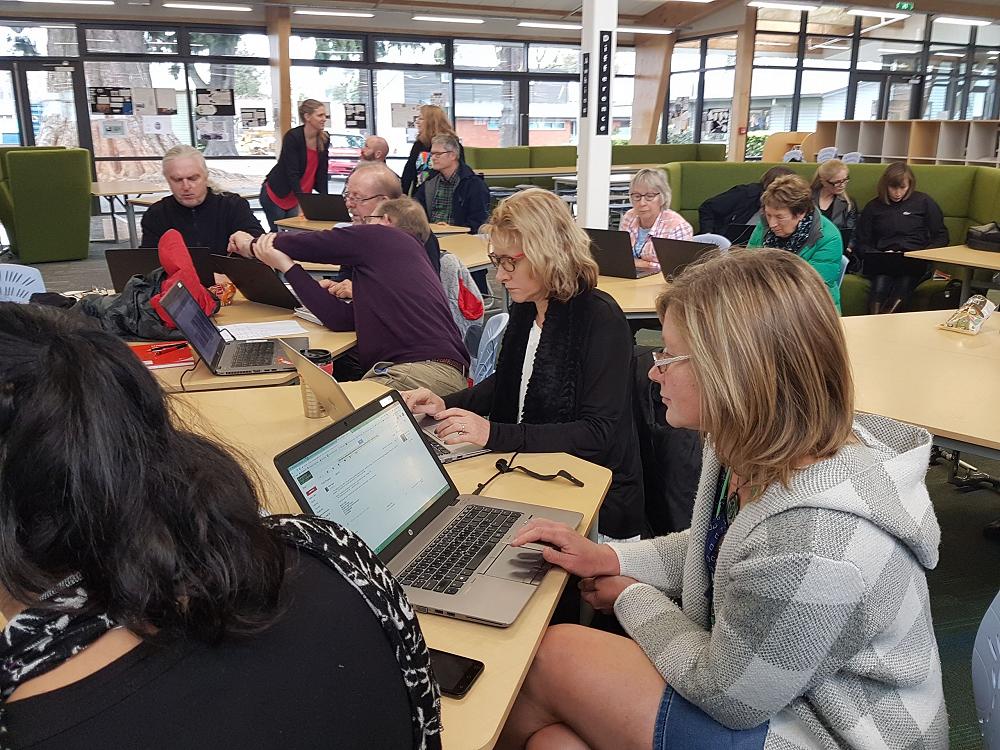
Frequently asked questions around flexible learning environments, collaborative teaching and the use of devices as a learning tool.
This guide includes a series of questions that are commonly asked about innovative or flexible learning environments, and provides some answers and useful links. There is a lot of information some of which will be relevant now and some which may become more relevant in the future.
Why have we changed to this ILE?
- An ILE is evidence-based to offer more opportunities and better outcomes for a wider group of students and prepare them for a rapidly changing world.
- An ILE is learner-focused, in which teachers support students to identify and develop their strengths and interests.
- An ILE helps students build knowledge, but also teaches them to understand how they are learning and aims to develop a life-long love of learning.
- Collaborative teaching and learning in an ILE provides a diverse range of stakeholders with opportunities to plan, problem solve, and design better solutions for learning.
- An ILE is a culturally responsive and inclusive space that recognises the importance and impact of positive personal and cultural identity. This supports students' identity, wellbeing, and achievement.
- The variability of an ILE provides teachers with the capacity to individualise the learning environment, providing students with what they personally need for learning.
- An ILE supports an inquiry approach that engages and challenges students in areas of personal interest to them.
- Useful links
This OECD publication identifies seven principles for successful learning based on decades of research. It answers the question: what should schooling, teaching, and most especially, learning, look like in this rapidly changing world?
The impact of physical design on student outcomes. This Ministry of Education commissioned literature review brings together existing research and supports a national conversation about learning spaces and their place in 21st century teaching and learning.
Future focus is one of the Principles of the New Zealand Curriculum.
NZC Update – Future-oriented learning and teaching This NZC Update looks to the future in education. It outlines key themes that will underpin future- oriented learning for young New Zealanders. It is based on a research report by NZCER.
Taking a “future focus” in education—what does it mean?
In this NZCER working paper, Rachel Bolstad identifies three ways of thinking about what students will need to prepare them for their future.
Building core capabilities for life
This five minute video from the Centre for the Developing Child, Harvard University, outlines the importance of developing core capabilities from early childhood into adolescence and adulthood.
The digital blue yonder - what's on the digital horizon for education and how might we harness it?
In this blog, Claire Amos talks about change and the
future of New Zealand education in a digital age.
This ILE is just an experiment, isn’t it?
- An ILE is not a random experiment, but part of a global shift in education. This is happening in schools around the world.
- Traditionally, schooling was designed for industrial times. An ILE is designed to prepare students for a digital age of information.
- An ILE uses inclusive design and practice, underpinned by the science behind learning – to meet the needs of all students and provide equal opportunities to learn.
- An ILE reflects the education sector’s developing understanding of the nature and science of learning.
- An ILE is a recent iteration of a range of educational initiatives and changes that have been happening for years. The education landscape will continue to evolve as people’s understanding about the nature of learning grows.
- The fact that there isn’t years of data to support an ILE yet isn’t a proof-point they don’t work. Educators are endeavouring to measure learning outcomes and student success in a more holistic way; relying less on using standardised methods of gathering data.
- There is a growing body of anecdotal evidence from students, teachers, and whānau to suggest that students are engaged and demonstrating deep learning outcomes. This is also reflected in the quality of their work.
Useful links
This NZC blog post explores the Seven Principles of Learning from the OECD report and provides supporting resources to help you dig a little deeper.
Guy Claxton – Learning to learn
In this video, Professor Guy Claxton talks about strategies for teachers to help students develop skills and competencies that will enable them to become lifelong students.
Dr. Julia Aitken: Spaces and resources – Part 1 In this short video Dr Julia Aitken discusses the thinking and research behind ILEs.
Creating authentic learning experiences at Rangiora High School
This short video explains what learning looks like when students are offered authentic learning experiences.
The New Zealand education system is not the only country undergoing education reform. These articles offer global examples:
Universal design for learning (UDL) is a framework to improve and optimise teaching and learning for all based on scientific insights into how humans learn.
Innovative learning environments: where’s the
Educator Mark Osborne suggests that when teacher pedagogy and physical learning environments are aligned there are significant gains to be made in achievement.
The Innovation Experiment: How Do We Know These New Learning Models Work?
This EdSurge article explains how Two Rivers Public
School is using a student inquiry approach with excellent results.
What is collaborative teaching?
- Collaborative teaching or team teaching, involves educators working together to lead, instruct, and mentor groups of students.
- Collaborative teaching provides teachers with different options to support a range of students. Some of these options include being able to lead, support, assist, or teach simultaneously.
- Collaborative teaching enables students to interact and build connections with more than one teacher in a flexible space. Students have access to a range of expertise.
- Collaborative teaching builds capacity and accountability, and lifts the effectiveness of the team.
- Collaborative teaching provides mutual support and assistance for planning and implementing lessons, assessing students’ progress, sharing professional concerns, and addressing students’ learning needs.
Useful links
Collaboration – So much more than parallel play This blog post explores what collaboration really looks like.
Teacher collaboration – Spreading best practices school-wide
This short video explains how teacher collaboration fosters a supportive professional culture, lessens teacher conflict, and provides students with school-wide best practices.
Best practices – Collaborative teams
This video describes how collaborative teams can work together to improve instructional planning.
Dr. Julia Atkin: Collaborative teaching and learning - Part 2
In this video Dr. Julia Atkin talks about the benefits of teachers working collaboratively.
Collaborative teaching advantages
This presentation discusses the many advantages of collaborative teaching on student learning and teacher development.
A collaborative approach to teaching in Rakahuri In this video, staff and students discuss collaborative teaching and learning in Rakahuri – the flexible learning space at Rangiora High School.
Play-based learning in action at Halswell School: Part 2
This video describes how teachers at Halswell School are providing voice and choice for students to inspire learning.
Collaborative approach to teaching and learning In this short video teachers and students from Canterbury describe what collaborative teaching
looks like.
What’s wrong with traditional classrooms?
They worked well for me.
- As the world changes and technology becomes increasingly advanced, students will need different skills to be prepared for, and help shape their future.
- An ILE with flexible learning spaces enables teachers to deliver personalised learning experiences that engage a diverse range of students effectively. The focus is on individualised learning rather than conforming.
- Flexible learning spaces and multiple teachers gives students multiple options as to how they learn and are supported to learn.
- An ILE does not mean that the effective tools used in the traditional classroom are no longer used. Teachers still use direct teaching approaches where required. Students should be supported with a substantial amount of teacher input as they develop skills to be more self-managing in their learning.
- A lot of discussion seems to focus on the single cell classroom versus flexible learning spaces and not about the teaching that happens inside spaces to meet the individual needs of all students.
Useful links
Innovative learning environments – Ministry of Education
This website offers information, school stories, student reflections, advice, and resources about ILEs.
This video explores the question, what are the skills we need to flourish in the 21st century?
The next generation of jobs won’t be made up of
This article argues that to prepare for the future, we need to shift from thinking about jobs and careers to thinking about challenges and problems.
OECD experts take stock of 'leading edge' NZ school environments
This article explains how OECD experts visited Waitakiri School to review their ILE.
Learner agency at Hobsonville Point Secondary School
In this video, learn how teachers work with students to help them develop a sense of ownership and responsibility.
7 things that happen when students own their own learning
This short presentation explains what happens when
you empower your students to own their learning.
